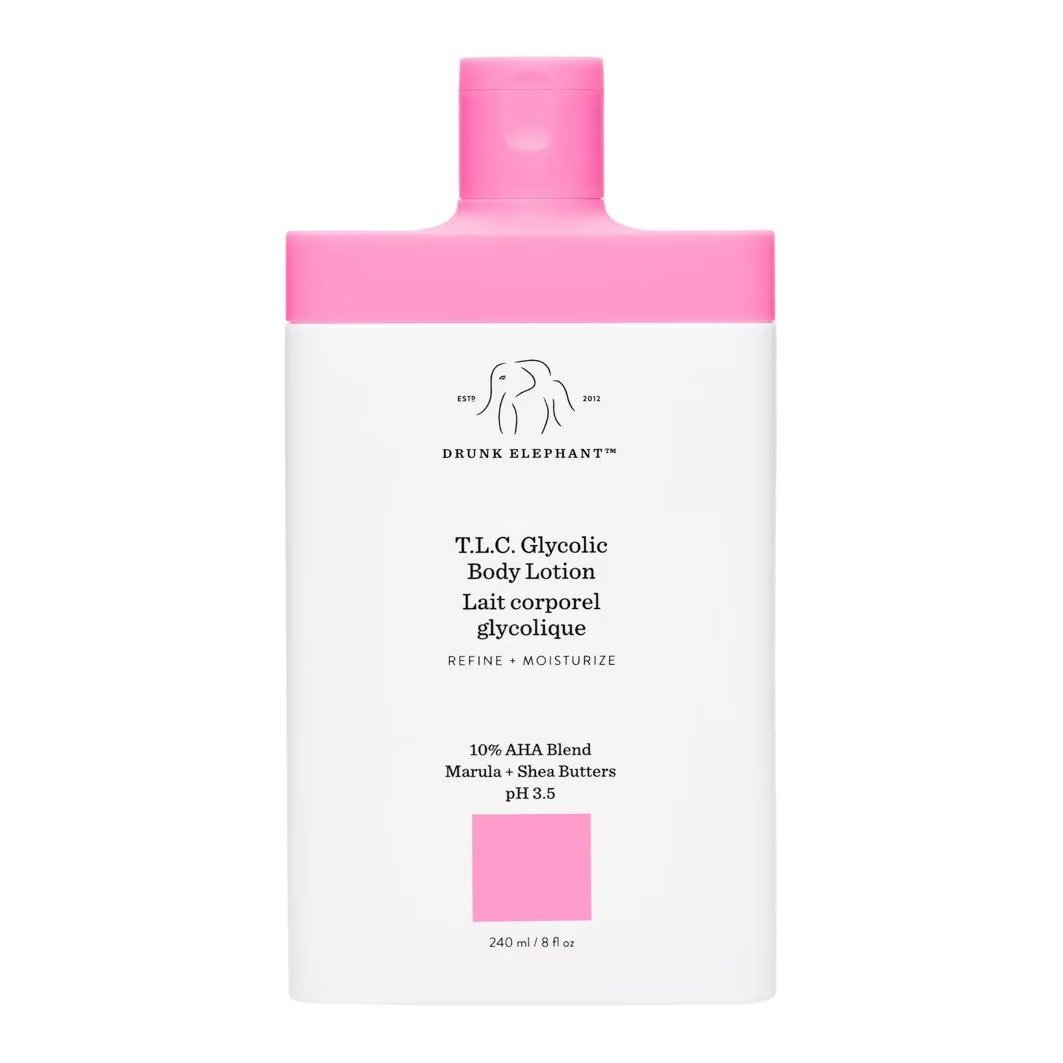Everything You Need to Know About Acids
If you are looking to take your skincare routine up a notch, chemical exfoliants are the way to go. But before you dive into the world of acids, let’s do a quick breakdown of the three different acid groups – AHAs, BHAs, and PHAs – so that you know exactly what type of chemical exfoliant is best for your skin.
AHAs (Alpha Hydroxy Acids)
AHAs are water-soluble acids made from sugary fruits and other natural sources. These acids help to exfoliate the surface of your skin by removing dead skin cells. As a result, they can effectively reduce the appearance of wrinkles, hyperpigmentation, and other signs of aging. AHAs are gentle enough to use every day but strong enough to make a difference in your complexion immediately. Common AHAs include lactic acid, glycolic acid, citric acid, malic acid, and tartaric acid.
Drunk Elephant TLC Glycolic Body Lotion
This supercharged blend of 10% AHAs gently exfoliates to restore and resurface dull and uneven areas, while its mix of soothing plant oils, deeply moisturizing butters, and barrier-supporting electrolytes replenishes dry and dehydrated skin below the neck. With a dream-team blend of glycolic, tartaric, lactic, and citric alpha hydroxy acids, T.L.C. Glycolic Body Lotion gently smooths and refines rough, bumpy skin while improving areas of uneven tone. A mix of antioxidant-loaded nonfragrant plant oils and butters—think green tea seed, passionfruit, apricot, marula, and shea—soothes and goes deep to moisturize dry, irritable skin, while squalane, vitamin F, sodium hyaluronate, and niacinamide work to create a stronger, healthier acid mantle. Powerful electrolytes (coconut fruit juice and sodium PCA) provide hydration and help defend against environmental stressors.
This multi-tasking, targeted lactic acid treatment rapidly exfoliates and boosts naturally youthful radiance, while visibly reducing the look of lines, wrinkles, and dark spots. High potency, purified grade lactic acid exfoliates dull, pore-clogging dead skin cells, to instantly clarify and reveal smoother, clearer skin. Together with skin brightening licorice, this super-concentrated treatment visually reduces the look of dark spots and discoloration caused by exposure to the sun, for naturally brighter, even-toned skin.
BHAs (Beta Hydroxy Acids)
BHAs are oil-soluble acids derived from plants such as willow bark or sweet birch. Unlike AHAs which only target the surface layer of your skin, BHAs penetrate deeper into the pores, which makes them ideal for treating acne and blackheads. BHAs also have anti-inflammatory properties which can help reduce redness and inflammation caused by breakouts. Common BHAs include salicylic acid and betaine salicylate.
Paula's Choice 2% BHA Liquid Exfoliant
This gentle, lightweight fluid quickly exfoliates dead skin cells both on the surface and deep inside pores to reveal smoother, clearer, more radiant-looking skin. BHA (salicylic acid) has anti-inflammatory properties and helps to reduce blackheads, blemishes and redness.
These alcohol-free pads keep acne under control without stripping or drying out skin. Along with Salicylic Acid, Kaolin Clay helps draw out impurities, Evermat helps reduce sebum, minimize pores and control shine, and Tea Tree Oil and Willow Bark help exfoliate and smooth skin texture.
PHAs (Polyhydroxy Acids)
PHAs are similar to AHAs in that they help remove dead skin cells from the surface layer of your skin but they have larger molecules which make them even gentler than AHAs. That being said, PHAs still provide effective exfoliation without irritating sensitive skin types as much as AHAs or BHAs can. Common PHAs include gluconolactone and lactobionic acid.
Dr Jart+ Pore Remedy PHA Serum
A gentle, water-like serum with 7% PHA clinically proven to help smooth skin without irritation. After one week, it removes dead skin cells, decreases blackheads and controls excess oil. It dramatically improves the appearance of skin tone and texture. And it does it all without dryness or peeling. PHA, a chemical exfoliator with a large molecular size that doesn’t penetrate as deeply into skin, makes this acid a better option for sensitive skin than AHAs and BHAs. Panthenol helps moisturize and Macadamia Seed Oil helps control sebum without clogging pores.
Taking your beauty sleep to the next level, this creamy eye mask is laced with plenty of avocado to deeply nourish, encapsulated retinol to gently renew your skin, and PHA (poly hydroxy acid) to exfoliate away dead skin cells so you can wake up glowing. Working overnight to deeply moisturise, illuminate and soften dry skin, this formula is enriched with avocado to ensure you get a rich supply of oleic and linoleic acids for a wonderfully nourished finish. Lending brightening effects is the gentle giant of skin care acids, poly hydroxy acid (PHA) which works by very carefully buffing away dead skin cells to reveal fresh and glowy ones underneath.
All three types of acids have their own unique benefits that can help improve the look and feel of your complexion over time with regular use. When done twice to three times per week, chemical exfoliation is still one of the most effective ways to improve texture and tone while reducing signs of aging like wrinkles or hyperpigmentation. Just remember that sunscreen the morning after :) Have more questions about acids? Send us an email at hello@butmoreimportantly.com
But More Importantly is the ultimate destination for finding the best cosmetics around. We take on the task of sifting through a vast array of options to find the most useful and expertly-recommended items that you can buy. Our team has recently scoured the market for everything from sensitive skin care routines to acne mistakes, getting started with SPF, hyperpigmentation and niacinamide. Our links are regularly updated to ensure that you get the best deals available, so make sure to check back often for new suggestions!





















